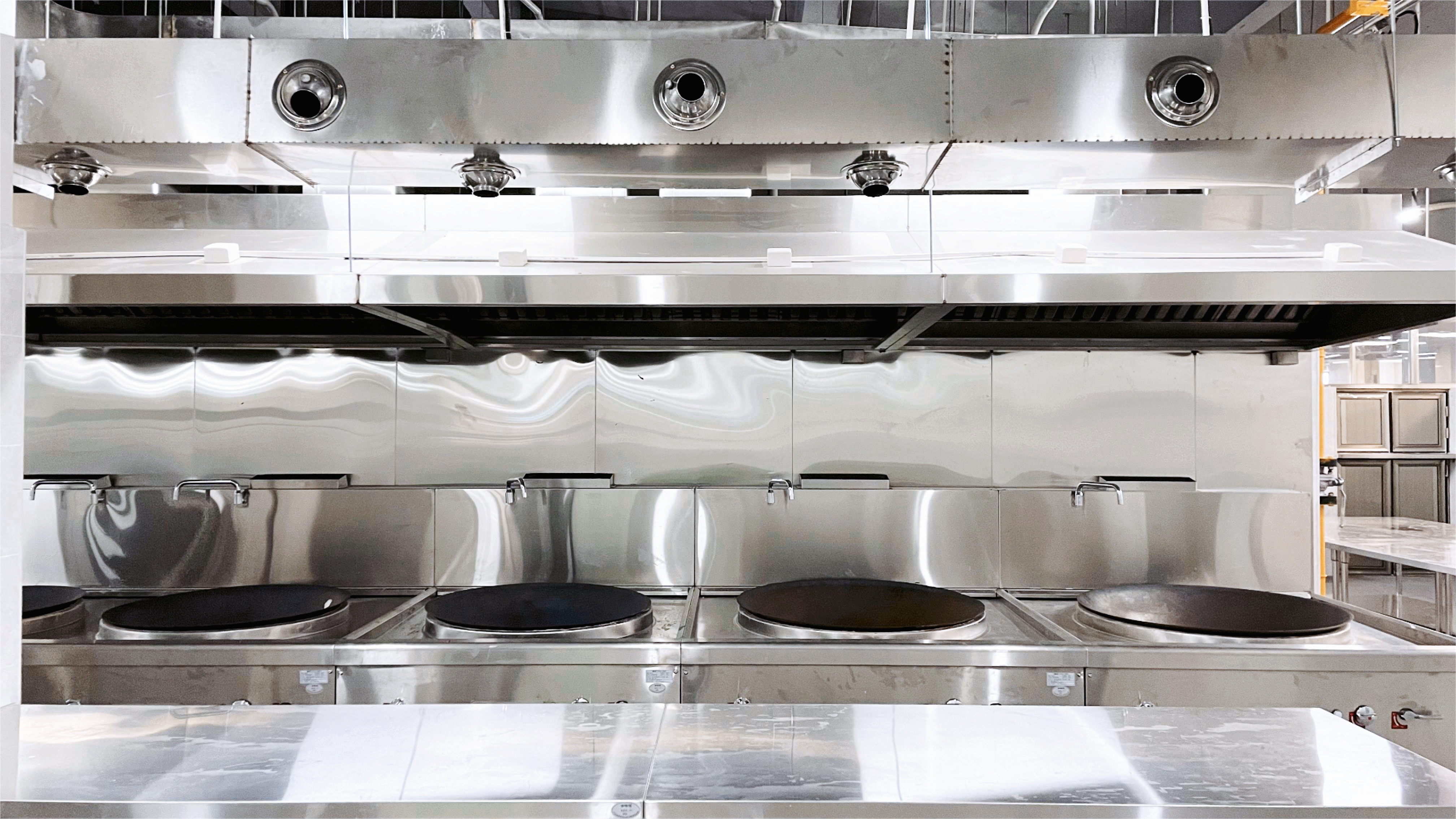Functional and Configuration Selection Scheme for Commercial Kitchen Exhaust System
The functional role and configuration selection scheme of commercial kitchen exhaust system. Commercial kitchen exhaust system is a very important equipment in the catering industry. Its main function is to discharge oil fume, heat and odor in the kitchen, maintain fresh kitchen air, and improve the comfort of the working environment. At the same time, the exhaust system can also lower the temperature of the kitchen, reduce energy consumption, and improve the efficiency of the kitchen.
01 Function and function of the ventilation system
Emission of oil fume: The commercial kitchen exhaust system uses high-efficiency filters to effectively remove oil particles from the oil fume, reducing its impact on the environment and human health.
Exhaust heat: The kitchen generates a large amount of heat during the cooking process, and the exhaust system can release this heat outdoors, reducing the kitchen temperature and improving the comfort of the working environment.
Exhaust odors: Various ingredients and seasonings in the kitchen can produce odors, and the exhaust system can effectively exhaust these odors to keep the kitchen air fresh.
Energy saving and consumption reducing: The exhaust system can lower the temperature in the kitchen, reduce the energy consumption of air conditioning and heating, and achieve energy saving and emission reduction.
Improving work efficiency: A good working environment can enhance the efficiency of chefs and improve the overall operational level of the kitchen.

02 Configuration selection scheme
1. Choose the appropriate fan: Based on the area, floor height, and number of cooking equipment in the kitchen, choose the appropriate fan to ensure that the air volume and pressure of the exhaust system meet the needs of the kitchen.
2. Efficient filter: Choose an efficient oil fume filter, such as activated carbon filter, metal mesh filter, etc., to effectively remove oil particles from the oil fume.
3. Noise control: Choose low-noise fans and exhaust pipes to reduce the noise generated during the operation of the ventilation system.
4. Control system: Install an intelligent control system to achieve automatic operation and adjustment of the ventilation system, improving the stability and reliability of the system.
5. Regular maintenance: Regularly check the operation status of the ventilation system, replace filters and fans, and ensure the normal operation of the system.





